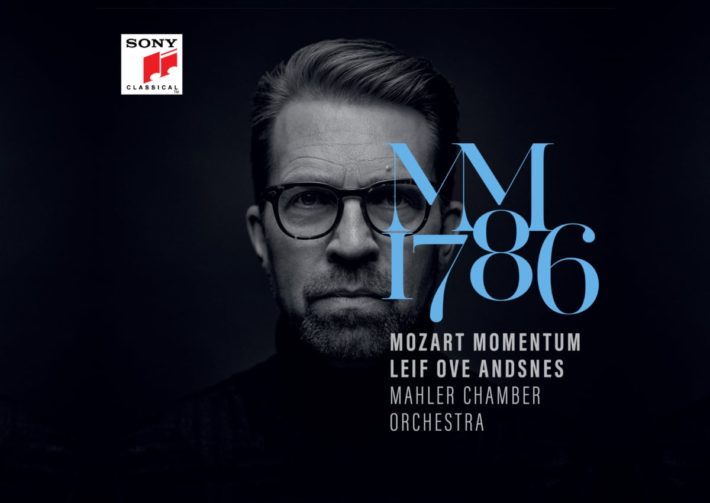I have enjoyed and admired many of Leif Ove Andsnes’ recordings over his long and distinguished career. I was particularly impressed with the 3-CD set of Beethoven’s Choral Fantasy and five piano concertos this same team released a few years ago and found Andsnes’ accompanying of Lise Davidsen on her recent Decca release of Grieg songs (reviewed here) sympathetic and deeply sensitive. So, I came to this new release with the highest expectations; regrettably those expectations are not fully met.
In October 2021 I wrote enthusiastically about Jeremy Denk’s Mozart concerto album in which he led the Saint Paul Chamber Orchestra from the keyboard. There are several similarities of approach between the two albums, with winds to the fore and string vibrato sparingly used. Accents are attacked sharply, articulation sparkles, and tempos tend towards the fast side – all qualities that reflect historically informed performance. Yet the Saint Paul orchestra finds greater light and shade, and shapes phrases more generously, while employing a wider mixture of orchestral color. Surely this reflects Denk’s vision of how the orchestral accompaniment should sound and interact with the piano.
Andsnes’ vision is more straightforward and unfussy, seemingly content to ensure everyone starts and ends together, with articulate phrasing that nevertheless is rather straight and rigid. There is no doubting the excellence of the Mahler Chamber Orchestra, which is first rate in every department. But the two concertos Andsnes plays (Concerto No. 23 in A major, K488 and No. 24 in C minor, K491) feature some of Mozart’s most sophisticated orchestral writing and greater attention to the myriad of details, as heard in the recent performance by Jean-Efflam Bavouzet and the Manchester Camerata (with conductor Gábor Takács-Nagy on Chandos) yields a more imaginative and emotionally engaging performance.
Andsnes playing is, of course, excellent. Runs are dispatched with evenness and precision; contrapuntal voicing is exemplary. But his plain-spoken approach only goes so far, whereas with Bavouzet, or Brautigam in his bracingly alive reading (accompanied by the period instruments of Die Kölner Akademie, led by Michael Alexander Willens on BIS) one hears a wider panoply of colors wedded to inspired phrasing. The objective approach undermines the operatic intensity of both concertos. For example, the final movement of K488 is quite fast in all three performances, but Andsnes sounds earnest and somewhat mechanical, eclipsed by the joy-de-vivre heard in the other two readings.
Related Posts
- Review: “Mozart Momentum 1785” – Leif Ove Andsnes, Mahler Chamber Orchestra
- Review: Mozart – Piano Concertos, Vol 5 – Bavouzet
- Review: Mozart & Contemporaries – Víkingur Ólafsson, Piano
It has been quite some time since I heard Mozart’s “Ch’io mi scordi di te” and perhaps that is why I found more to enjoy in this performance. But it would be wrong to discount soprano Christiane Karg’s gorgeous sound and dramatic lyricism; indeed, her emotional engagement inspires greater dramatic involvement from both orchestra and piano.
The two chamber pieces, Piano Quartet No. 2 K. 493 and the Piano Trio No. 3 K. 502 are also fully successful. Andsnes is clearly a cooperative partner in chamber repertoire, and there is a clear sense of deeply felt intimacy and collaboration. Some listeners may be troubled by the lack of string vibrato, but the spot-on intonation and sense of give and take between players is beautifully persuasive.
The issues heard in the A major concerto are also apparent in the C minor work. This is arguably Mozart’s most theatrical piano concerto, and while the Mahler Chamber Orchestra ensures the opening has plenty of fire and tonal weight, turn to Willen and the Kölner Akademie and the same music has an almost Romantic angst as strings and winds slash away at one another. Brautigam and Willen unearth the emotional import of each phrase and musical idea in a reading that never seems far away from the opera house. The heterogenous colors of period instruments only adds another layer of interesting orchestral hues.
I cannot fault the programming, which offers us a fascinating focus on the various compositional activities of a year in Mozart’s life. Andrew Mellor’s notes, interesting and informative, put each work into historical context. Sony’s sound is overly clinical, the sound lacking depth, especially when compared to the Chandos and BIS recordings. Despite the technical excellence of these readings, one finds more compelling performances in the alternatives discussed above.

“Mozart Momentum 1786”
Leif Ove Andsnes – Piano, Conductor
Christiane Karg – Soprano
Mahler Chamber Orchestra
Sony Classical, CD 19439854512
Recommended Comparisons
Read more classical music reviews or visit The Classic Review Amazon store
Follow Us and Comment:
Get our periodic classical music newsletter with our recent reviews, news and beginners guides.
We respect your privacy.









